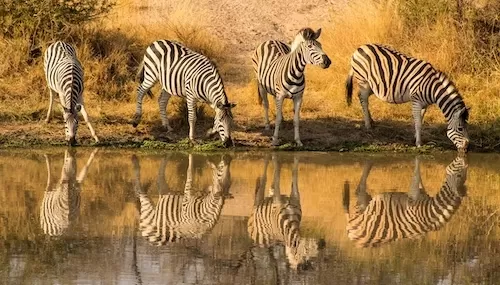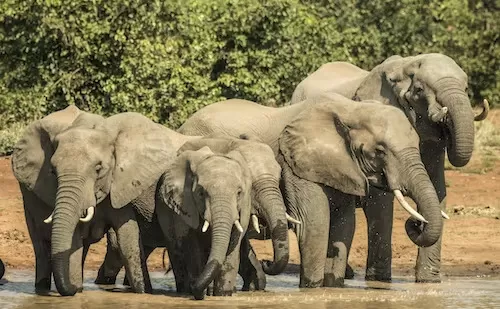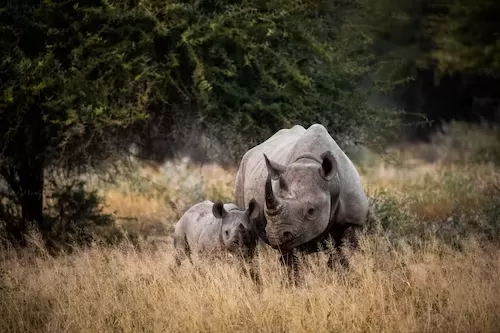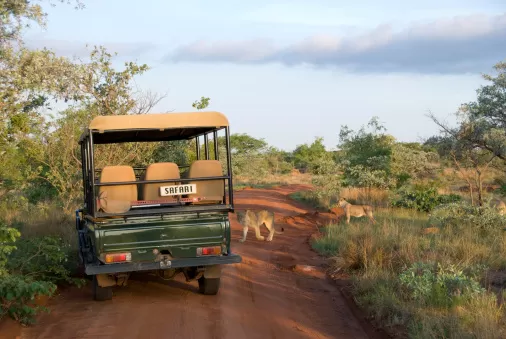The Kruger National Park is a South African game reserve that is one of the largest game reserves in the African continent, an interesting site contributing to tourism.
The 19,485 km2 Park can be located on the eastern borders of the province of Limpopo and stretches to the Mpumalanga location in South Africa. The park lies between the Limpopo River and the Crocodile respectively in the north and south of the park that is serving as boundaries.
Why is Kruger National Park famous?

The park is part of the Kruger to Canyons Biosphere, an area designated by the United Nations Educational, Scientific and Cultural Organization (UNESCO) as an International Man and Biosphere Reserve. Areas of the park were first protected by the government of the South African Republic in 1898, and it became South Africa’s first national park in 1926.
After the proclamation of the Kruger National Park in 1918, the first three tourist cars entered the park in 1927, jumping to 180 cars in 1928 and 850 cars in 1929.
Warden James Stevenson-Hamilton retired on 30 April 1946, after 44 years as warden of the Kruger Park and its predecessor, the Sabi Sabi Game Reserve.
Stevenson-Hamilton was replaced as warden by Colonel J. A. B. Sandenbergh of the South African Air Force. In 1959, work commenced to completely fence the park’s boundaries. Work started on the southern boundary along the Crocodile River and in 1960 the western and northern boundaries were fenced, followed by the eastern boundary with Mozambique. The purpose of the fence was to curb the spread of diseases, facilitate border patrolling and inhibit the movement of poachers.
The Makuleke area in the northern part of the park was forcibly taken from the Makuleke people by the government in 1969 and about 1500 of them were relocated to land to the south so that their original tribal areas could be integrated into the greater Kruger National Park.
In 1996 the Makuleke tribe submitted a land claim for 19,842 hectares (198.42 km2), namely the Pafuri or Makuleke region in the northernmost part of the park. The land was given back to the Makuleke people, however, they chose not to resettle on the land but to engage with the private sector to invest in tourism. This resulted in the building of several game lodges from which they earn royalties.

In the late 1990s, the fences between the Kruger Park and Klaserie Game Reserve, Olifants Game Reserve, and Balule Game Reserve were dropped and incorporated into the Greater Kruger Park with 400,000 hectares added to the Reserve. In 2002, Kruger National Park, Gonarezhou National Park in Zimbabwe, and Limpopo National Park in Mozambique were incorporated into a peace park, the Great Limpopo Transfrontier Park.
In 2009, SANParks envisaged a four-star hotel northeast of Malelane on the bank of the Crocodile River, as part of a survival strategy to make the park less dependent on state subsidies. Eventually, Radisson Blu was mandated to operate a 104-room safari resort starting in 2019, which promises a smaller ecological footprint than that of prior, existing camps.
The three-star, 128-room Skukuza Safari Lodge, to be completed by late 2018, was necessitated by the adjacent Nombolo Mdhluli conference center, opened in 2011, which draws guests arriving by charter flights or in tour busses. The former head of the park Salomon Joubert warned that these developments threaten the character, ethos, and original objectives of the park, but the minister of environmental affairs, Edna Molewa, deemed the development of 0.3% of the park as acceptable. The park was temporarily closed due to the COVID-19 pandemic on 25 March 2020. It was reopened on 8 June 2020.

The climate of the Kruger National Park and Lowveld is subtropical/tropical, specifically a hot semi-arid climate. Summer days are humid and hot. The rainy season is from September until May. The Kruger National Park website lists September and October as the driest periods, culminating at the beginning of the rainy season late in October.
Because the park spans 360 kilometers or 220 miles from north to south, the climate can vary throughout the park. Skukuza in the southern part of the park is about 2 to 3 °C cooler throughout the year than Pafuri in the north, with significantly more rainfall.
The park that is mostly and widely anticipated for camping and safari and also providing adventures with a natural luxury of accommodation and lodges, is home to different species of wildlife such as Elephant, Lion, Rhino, Leopard and Buffalo. The park is also home to different species of colorful birds.
How much does it cost to go to Kruger National Park?
The Kruger National Park offers Safari trip packages to small groups, family size, and so on who wants to explore the nature side of life for an amount of fee after reservations has been. Current pricing for bookings can be seen and made at the official website of the park.
Enjoy a blissful nature side of life at the Kruger National Park in the South Africa.
Thank you for reading this article.
Related articles
Best Hikes From The Shai Hills Resource Reserve
Best Things To Do At The Maasai Mara Reserve National Park
Kakum National Park: The Best Canopy Walkway In Africa
Friendly Crocodiles You Must See In Ghana At Paga
The Most Visited Natural Lake In Ghana
Mount Kilimanjaro The Highest Point In Africa
Namib Desert: Interesting Facts And Things To Know
13 Places To See With Things To Do In Phuket
10 Amazing Tourism You Must See In Vietnam

